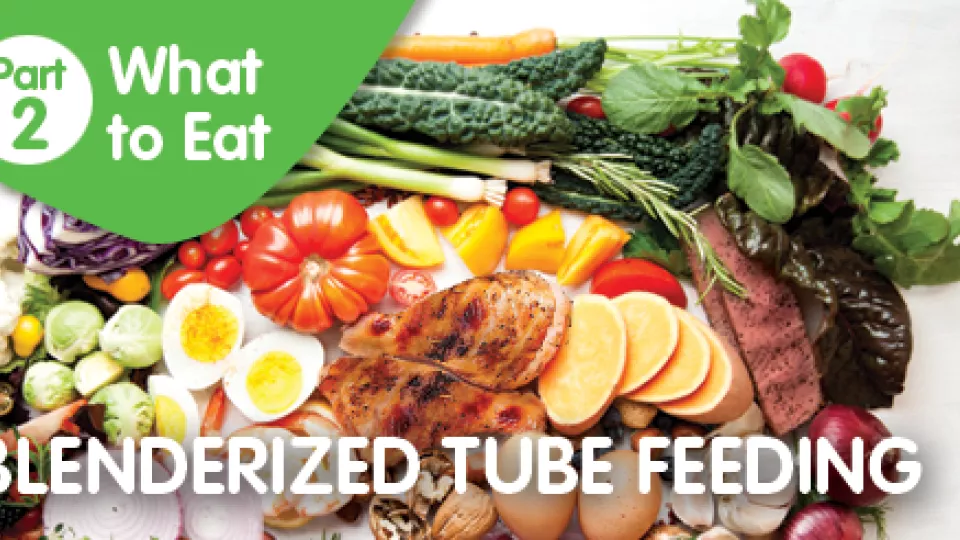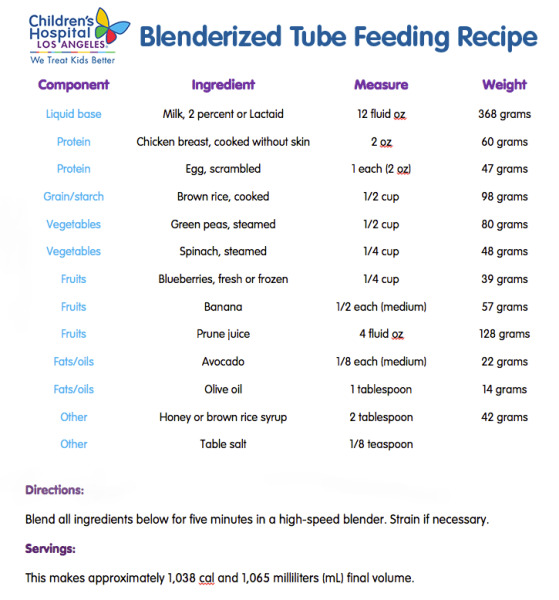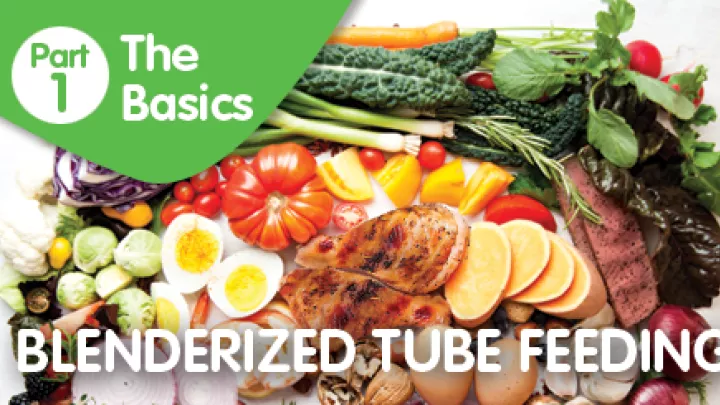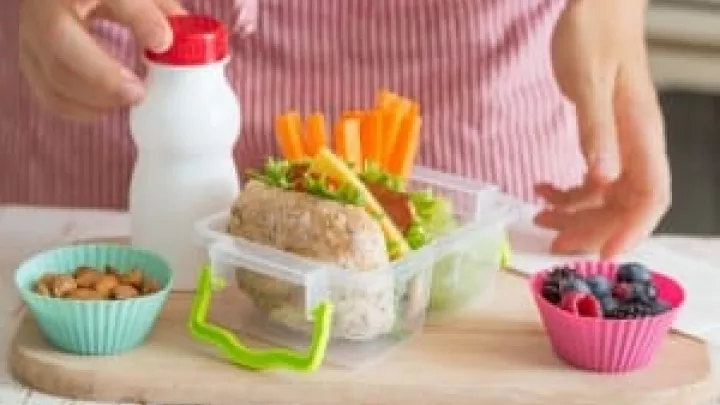
Blenderized Tube Feeding Part Two: What to Eat
When a child is placed on a G-tube feeding regimen in the hospital, a standard commercial formula is chosen by the medical team, based on the child’s nutritional and medical needs. Standard formula products are designed to be nutritionally complete, and each tube feeding plan is created by your doctor or registered dietitian (RD) to contain the optimal amount of calories, protein, fat, fluid, fiber, vitamins and minerals for the child. If a family chooses to transition from a standard formula to whole food-based blenderized tube feeding (BTF), it is vital that the blended food recipe provides the right nutrient profile for your growing child. A pediatric RD is trained to determine a child’s estimated nutrition needs, and this information is crucial in developing an appropriate blended food-based formula. The RD can also track the child’s growth and symptoms, making adjustments to the recipe and regime as necessary.
There are many ways to incorporate blended foods into a G-tube feeding:
- BTF only
- BTF blended with commercial formula
- BTF for only some of the child’s feedings each day
- BTF used primarily, with commercial product used as back up
Choosing to add whole foods can add vitamins and minerals and may improve tolerance even when using formula as the base. Compleat Pediatric, a standard commercial formula product made from blended food, could be an alternative or back-up plan in case of emergency, such as a power outage that renders the family blender unusable.
BTF food safety tips
- Wash everything: Careful hand washing, cleaning of your tools and work area, and refrigeration of BTF are very important to making sure that the blended food stays safe to feed your child. Use soap and warm water, and air dry or dry with a clean towel (only used once). Wash your hands and clean under your nails for 20 seconds minimum; wash the counter, cutting boards, strainer, storage containers, blender (even under the rubber seal), tops of canned products, fruits and vegetables.
- Preparation: Always cook animal products to the correct temperature, especially meats, fish, poultry and eggs. To prevent cross-contamination, use different cutting boards for preparing meats, keeping all utensils separate from vegetables and fruits. Bacteria from raw foods can make cooked or fresh foods dangerous for people to eat.
- Storage: Blenderized food can only be kept at room temperature for two hours. It can be kept refrigerated for up to 24 hours maximum, and in the freezer for up to 3 months. Thaw all blenderized food overnight in the refrigerator. Blenderized food mixed with commercial formula cannot be frozen. Do not add newly prepared BTF to older prepared BTF.
BTF Ingredients
All recipes should be evaluated by the RD to ensure nutrition needs are met, with ongoing attention to your child’s growth. Homemade BTF recipes are usually broken down into five basic nutritional parts: protein, grains, vegetable/fruits, fat and calcium source. Although a family’s meal usually includes all parts, the challenge when making a BTF recipe is that the ingredients must be blended to the consistency that will pass through a tube and contain the correct nutritional balance. Some families find it simpler at times to use commercial stage 1 or 2 pureed infant foods as a replacement for whole foods as they are pre-cooked and pureed. A complete vitamin mineral supplement may also be necessary based on your child’s specific nutritional requirements; consult with your pediatrician or RD to decide what your child needs.
Sample BTF Recipe

When thinking about switching to BTF, it is very important to talk to your child’s medical team first. Talk with the RD about how much homemade blenderized food you’d like to give your child, and what foods your family generally cooks. This is important to consider when creating BTF recipes. Remember, homemade blenderized food requires special care to meet all of your child’s nutritional needs.


